Railways have come a long way since their humble beginnings as wooden wagonways. From horse-drawn trams and steam locomotives to high-speed trains and innovative technologies like Maglev and Hyperloop, they have continuously evolved to meet transportation demands. Railways have shaped economies, connected people and places, and prioritized efficient and sustainable transportation.
 In this article inspired by a Rail Baltica Academy lecture with Konstantinos Tzanakakis, Operation and Maintenance Team Leader at RB Rail AS, we explore a concise overview of key milestones that have shaped railways throughout history.
In this article inspired by a Rail Baltica Academy lecture with Konstantinos Tzanakakis, Operation and Maintenance Team Leader at RB Rail AS, we explore a concise overview of key milestones that have shaped railways throughout history.
Tracing back to the invention of the wheel, tracked transportation systems have ancient origins. The wheel was believed to be first invented around 8,000 B.C. in Asia, with the oldest known wheel dating back to approximately 3,500 B.C. in Mesopotamia. Initially made from solid wood, wheels enabled efficient movement when coupled with an axle. In Europe, the oldest discovered wheel near the Slovenian town of Ljubljana, measuring 140 centimeters in width, is approximately 5,200 years old and played a crucial role in facilitating movement.
The Ancient Origins of Guided Transportation: Tracked Roads and the Diolkos
The concept of using “tracked” roads with grooves cut into stone blocks for wheeled vehicles is ancient, dating back at least 2,000 years. Civilizations like Greece, Malta, and the Roman Empire recognized the benefits of guiding wheeled vehicles along these grooves, resulting in improved efficiency and reduced maintenance. Evidence of these early “rail lines” can still be found at ancient sites in Greece and Italy, where cut stone tracks were used in quarries to transport loads pulled by animals.
The earliest precursor to the railway was the Diolkos, a paved trackway near Corinth in Ancient Greece.
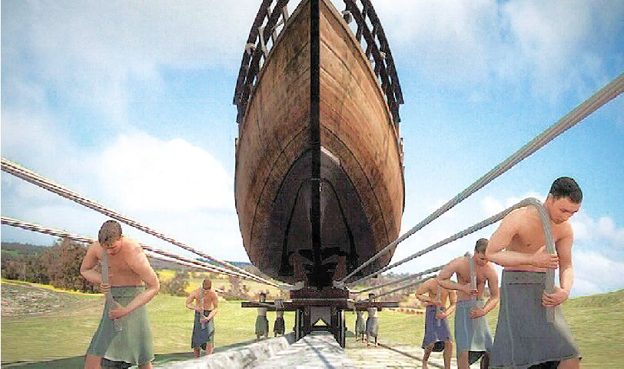
Constructed around 600 B.C., it provided a shortcut across the Isthmus of Corinth, allowing boats to be transported overland and avoiding the lengthy and treacherous journey around the Peloponnese peninsula. While primarily used for transporting goods, it also played a role in naval campaigns during times of war. The Diolkos served its purpose for over 650 years and can be considered a rudimentary railway, with a prepared track that guided vehicles along its path.
From Wooden Rails to Steam Power: The Evolution of Early Railways
In the more recent past, railway development accelerated with the introduction of wooden rails and horse-drawn traffic in the 1550s. These early wagonways, served the purpose of transporting ore to and from mines. The Reisszug, a funicular railway built in 1515 at Hohensalzburg Fortress in Austria, stands as an early example of rail transport, utilizing wooden rails and human or animal power.
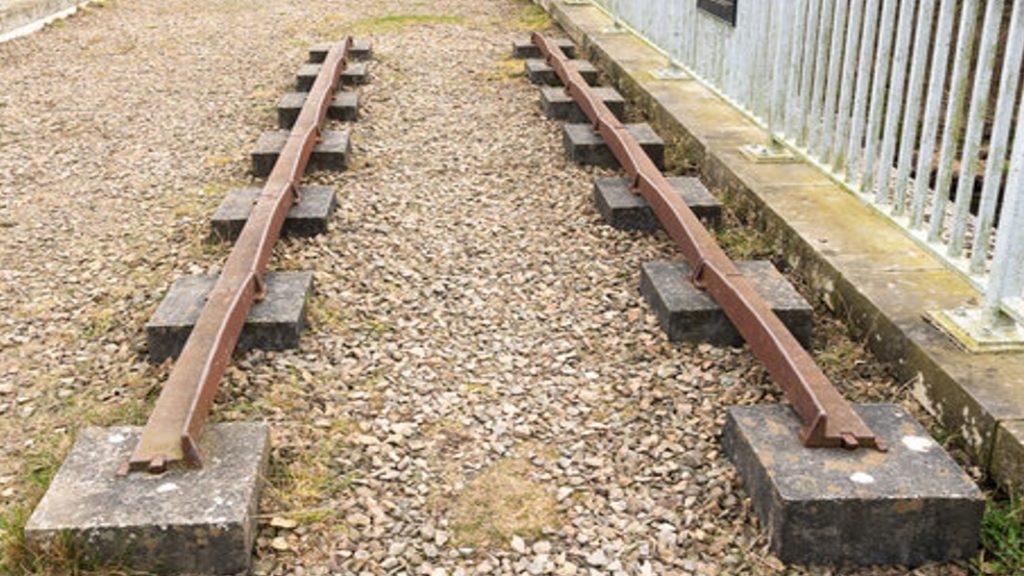 Metal rails made their debut in the late 1760s by the Coalbrookdale Company in the UK. Cast iron plates were affixed to the top of wooden rails, enhancing durability and load-bearing capacity. This innovation led to the creation of plateways, where wheels without flanges ran on L-shaped metal plates. Initially, plateways relied on horsepower but later incorporated cable haulage and small locomotives.
Metal rails made their debut in the late 1760s by the Coalbrookdale Company in the UK. Cast iron plates were affixed to the top of wooden rails, enhancing durability and load-bearing capacity. This innovation led to the creation of plateways, where wheels without flanges ran on L-shaped metal plates. Initially, plateways relied on horsepower but later incorporated cable haulage and small locomotives.
The Swansea and Mumbles Railway in Wales, UK, holds the distinction of being the world’s first passenger horsecar railway service, commencing on March 25, 1807. Starting with horse-drawn carriages, the railway transitioned to steam locomotion and eventually converted to electric power before ceasing operations in January 1960. The first operational steam rail locomotive model was designed and built by John Fitch in the United States in 1794. In the UK, Richard Trevithick, an English engineer, constructed the first full-scale working steam locomotive in 1804. On February 21, 1804, Trevithick’s locomotive successfully hauled 10 tons of iron and 70 men for nearly ten miles from Penydarren to Abercynon, Wales, at a speed of 8 km/h (5 mph).
The advent of steam locomotives revolutionized railway transportation
In 1812, Matthew Murray’s locomotive, Salamanca, emerged as the first commercially viable steam locomotive. It transformed the horse-drawn Middleton Railway into a steam-powered railway, showcasing the immense potential of steam locomotion.
However, it was George Stephenson, an English civil engineer, who made significant advancements in railway development. In 1825, Stephenson constructed Locomotion, the first steam locomotive to operate on a public railway. This railway, known as the Stockton and Darlington Railway, facilitated the transportation of passengers and freight, marking a pivotal moment in railway history. The success of the Stockton and Darlington Railway paved the way for the future expansion of railways worldwide.
The Liverpool and Manchester Railway, established in 1830, is considered the birthplace of modern railway transportation. It was the first railway to exclusively rely on steam power for passengers and freight. Designed by George Stephenson and his son Robert Stephenson, the railway showcased their revolutionary locomotives. The Rainhill Trials, held in 1829, awarded Stephenson’s Rocket as the winning locomotive, featuring groundbreaking innovations like a multi-tube boiler and a steam blast pipe. The success of the Liverpool and Manchester Railway, along with the Rocket, propelled the rapid expansion of railways.
Throughout the 19th century, railways rapidly grew worldwide, connecting major cities and industrial hubs across Europe, Asia, and North America. Railways became vital transportation infrastructure, fostering economic growth, urban development, and social cohesion. They opened new markets, improved trade routes, and encouraged cultural exchange. The impact on society was profound, transforming travel habits, generating employment, and altering perceptions of distance and time.
Unleashing the Need for Speed: Advancements in High-Speed Rail
The 20th century witnessed further advancements in railway technology. Steam locomotives gave way to diesel-electric locomotives, which offered cleaner operation, increased efficiency, and reduced maintenance requirements. The introduction of electrification further improved the performance and environmental impact of railways. Electric trains gained popularity, especially in urban areas and commuter networks, providing faster and more reliable transportation.
In the late 20th and early 21st centuries, the focus shifted to high-speed rail networks. Germany introduced the diesel-powered “Fliegender Hamburger” in 1933, reaching speeds of up to 160 km/h. However, Japan became the true pioneer of high-speed rail.
The Tōkaidō Shinkansen, inaugurated in Japan on October 1, 1964, revolutionized rail travel. Operating at speeds over 200 km/h, it drastically reduced travel times between Tokyo and Osaka. The Shinkansen became a symbol of Japan’s technological prowess, inspiring high-speed rail development worldwide.
France’s Train à Grande Vitesse (TGV) also became iconic, setting speed records, including 574.8 km/h in 2007. The TGV network connected France and neighboring countries, transforming transportation in Europe.
Other countries like China, Spain, South Korea, and Italy developed their own high-speed rail networks. China’s expansion has been particularly remarkable, with the world’s largest network and trains exceeding 400 km/h, using Maglev, or magnetic levitation technology.
Next-Generation Railways: Exploring the Potential of Maglev and Hyperloop Technologies
In recent years, railway transportation has seen the emergence of groundbreaking concepts and technologies like Maglev and Hyperloop.
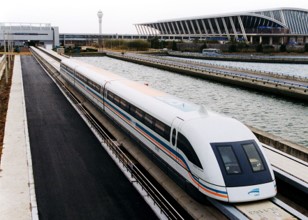 Maglev, or magnetic levitation, uses magnetic fields to suspend and propel trains without physical contact with the tracks. The first commercial Maglev system, the Linimo in Nagoya, Japan, began operating in 2005. Maglev trains can achieve impressive speeds, with the Shanghai Maglev Train in China holding the record for the fastest commercial service at 431 km/h. The absence of friction between the train and tracks results in smoother rides and lower maintenance costs.
Maglev, or magnetic levitation, uses magnetic fields to suspend and propel trains without physical contact with the tracks. The first commercial Maglev system, the Linimo in Nagoya, Japan, began operating in 2005. Maglev trains can achieve impressive speeds, with the Shanghai Maglev Train in China holding the record for the fastest commercial service at 431 km/h. The absence of friction between the train and tracks results in smoother rides and lower maintenance costs.
Hyperloop, a term proposed by Elon Musk, envisions high-speed travel in low-pressure tubes. Hyperloop pods would travel at near-supersonic speeds, utilizing magnetic levitation and low air resistance. With speeds exceeding 1,000 km/h, Hyperloop aims to significantly reduce travel times between distant cities.
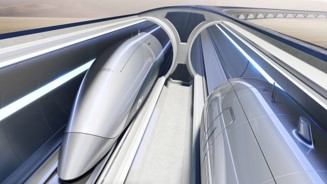
While companies and research groups are actively exploring and testing Hyperloop technology, it is still in the developmental phase, and commercial implementation is yet to be realized.
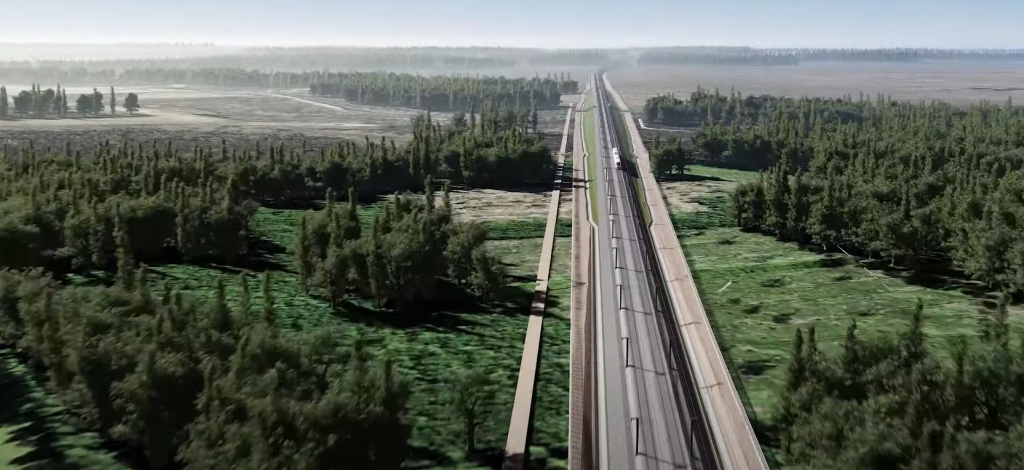
Rail Baltica represents a significant milestone in the next historical chapter of high-speed railway and European standard gauge development in the Baltic region. Its primary objective is to connect the region to the Trans-European Transport Network (TEN-T) corridor, sparking a new era of development and technological advancements. This transformative project will not only enhance connectivity and transportation efficiency but also drive economic growth, regional integration, and the adoption of cutting-edge railway technologies. By integrating the Baltic region into the European railway network, Rail Baltica sets the stage for an exciting new chapter in the region’s development.
For more detailed insight into the history of railways watch Konstantinas’ lecture here.
***
References
- Konstantinos Tzanakakis, “The Railway Track and Its Long Term Behaviour”, Springer, 2013
- Howie Baum, “The History of the Wheel and Bicycles”, chrome-extension://efaidnbmnnnibpcajpcglclefindmkaj/https://www.uc.edu/content/dam/refresh/cont-ed-62/olli/s21/wheel-and-wheeled-vehicles.pdf
- Wikipedia:
- https://science.howstuffworks.com/transport/engines-equipment/maglev-train.htm
- https://tumhyperloop.com/about-hyperloop/
